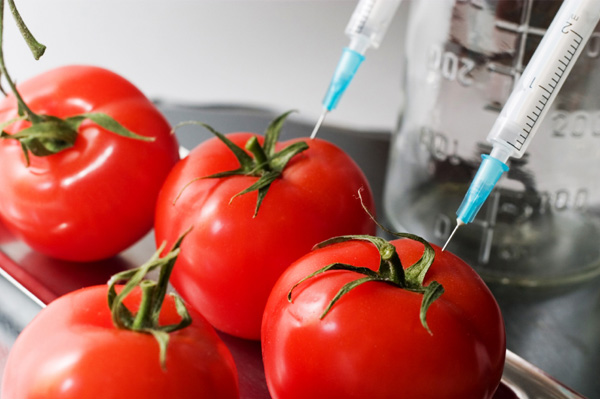
(
http://www.theepochtimes.com/n3/255547-top-5-gmo-failures/)
A new type of Hamlin orange is set to be tested in field trials pending approval in Florida. The fruit, designed by scientists at Cornell University, has been genetically modified to create its own pesticide.
A large amount of crops, including soy, corn and cotton, have been similarly genetically modified and are grown throughout the USA, despite their long-term safety being disturbingly underevaluated. Other genetically modified organisms never made it that far though.
FlavrSavr Tomato
Take for example, the Flavr
Savr Tomato, the first
GMO to enter the US market. In the
1980s, researchers at
Calgene, Inc. (now owned by Monsanto) invented this tomato to be able to withstand the rigors of transport, even after vine ripening, and still have a long, attractive shelf life.
The
Flavr Savr Tomato was approved for sale in 1994, but Dr.
Arpad Pusztai soon revealed that several test rats who ate GM potatoes developed stomach lesions and died. The subsequent public opinion, in addition to
Calgene's inability to produce profits, led to the quick defeat of
Flavr SavrNewLeaf Potato
Monsanto's
NewLeaf potato, a crop designed to ward off the Colorado potato beetle met U.S. regulatory requirements in 1995. The potato was expected to be a big success for fast food and junk food companies, but, after a study from the
Institue of Nutrition was released in 1998, showing that rats consuming
NewLeaf potatoes experienced substantial organ damage, the food industry lost interest. By 1999, farmers had planted about 50,000 acres of
NewLeaf potatoes, but, by 2001, sales and marketing of the product was suspended.
Starlink Corn
88% of all corn grown in the U.S. is genetically modified, but this wasn't always so. One of the earlier strains of GM maize,
Starlink Corn, released in 1998, has caused a lot of problems for farmers around the world. This strain of corn was developed to rupture the stomach cells of caterpillars,but showed a potential for allergic reaction in humans. As such, the EPA approved
Starlink but restricted its use to animal feed and fuel.
Despite these restrictions,
Starlink DNA was found to have spread across several corn varieties and make its way into the food supply. Its widespread contamination caused dozens of products to be recalled and production to cease. Despite this,
Starlink contamination was found in the Saudi Arabian food supply in August 2013.
LibertyLink Rice
In 2011, Bayer AG paid $750 million to thousands of U.S. farmer after its
LibertyLink rice contaminated conventional long grain rice. This devastating contamination not only caused a substantial drop in the value of rice, but an entire strain of rice was lost for good.
GM Wheat
In 2002, Monsanto submitted an application for a wheat strain modified to exhibit the same herbicide resistance found in its other crops. Wheat growers weren't interested in it though and feared that the crop would contaminate natural wheat. Foreign markets are vehemently opposed to
GMO wheat, so any contamination could destroy a farmer's exports. When an unapproved
GMO wheat strain was found in an Oregon field, many grew suspicious of America's wheat supply.
